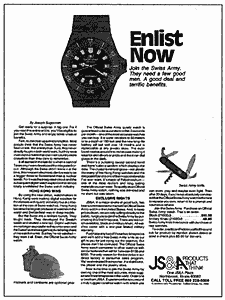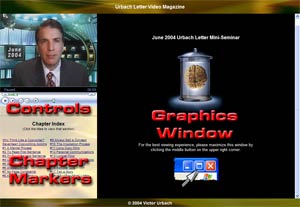|
|
|
 How
to Think Like a Copywriter How
to Think Like a CopywriterThere was a time when I introduced myself as a "copywriter." However, I quickly discovered people had no idea what a copywriter was. Many thought it had something to do with "copyright" and mistook me for a lawyer (shudder). Others, guessing correctly that a copywriter is a writer of some sort, thought I was in the movie business, a writer of screenplays. Things got a little clearer when I started using the term "marketing copywriter." Still, few people understand that a top copywriter is much more than a wordsmith. He or she is a marketing strategist first and a writer second. These days I don't do as much "writing for money" as I used to, but the skills and mindset developed as a copywriter still serve me well. I learned this craft at the feet of giants: Jay Abraham, Gary Halbert, John Carleton, and Ted Nicholas, to name just a few. I read everything by David Ogilvy, Claude Hopkins, John Caples… again to name just a few. I learned from Bob Bly, Dan Kennedy, Denny Hatch, Brian Keith Voiles, Eugene Schwartz, Jay Conrad Levinson, and many more. Maybe these names mean something to you, but more likely they don't. That's too bad. These men are much more than mere writers of words. They are creative geniuses, masterminds of entire business enterprises. From them I learned how to think like a copywriter. You can too. The other day, I took a look at my marketing resource bookshelf, and decided to re-read a great book by Joe Sugarman about copywriting: Advertising Secrets of the Written Word. But why should you care about my reading choice? You probably don't consider yourself an advertising maven. Most Urbach Letter readers aren't professional marketers; they're doctors, lawyers, accountants, corporate executives, consultants, or service providers, with extremely deep knowledge about their profession and industry. Why then, should you give a hoot about mister Sugarman and his book about advertising? Because the book is chock-full of idea-stimulators that will help you become more successful, even if you never intend to "run an advertisement." Joe is one of the true legends of marketing. He founded a company called JS&A back in the early seventies. You've undoubtedly seen JS&A's ads; they had a very distinctive style. He marketed "gadgets and gizmos" to "tech-heads." Some of the famous ones were for early chess computers, the new (for the time) pocket calculators, and something called the "Bone-Fone" that was pre-empted by Sony's Walkman. Later, he became quite well known for his "Blu-Blockers" sunglasses; you've probably seen him on TV selling them.
I particularly loved one ad that Sugarman created to sell a Nautilus home exercise machine. It was a closeout situation; the machine stopped selling at retail. Sugarman got the mail order closeout deal. But Nautilus did not want the product advertised at a discount price because it might anger the retailers who sold the machines at full retail price. Since he was contractually enjoined from advertising the product at a discount price, Sugarman came up with a really creative concept for his ad. The product died at retail when offered at $485 (probably $1,000 in today's money). But his cost was only $100, so he could sell it at $250 and make a nice profit. But how? Here's what he did, and this is genius: he advertised the exercise machine for $500, even more than at retail — but offered readers the chance to circle any misspelled words in the ad for a $10 credit each. And he sprinkled 25 creatively misspelled words like mispelled, espense, and disclamers throughout. By "breaking the rules," he was able to profitably move a ton of these "unsellable" (is that a word?) products. By the way, he was pleasantly surprised by the number of buyers who didn't catch many of the misspellings, bringing in lots more money than he expected. He also took calls from people who told him they spent hours reading and rereading the ad to find the number of misspelled words — even though they had no intention of buying an exercise machine. How'd you like to have people read your company's marketing material that carefully? Great example of a creative problem solving approach. Key phrase there is "problem solving." That's the point of studying marketing. Marketing is much, much more than advertising. Oh, maybe it was close to synonymous in the distant past, but now, in the year 2004, marketing has become integrated within virtually every aspect of a successful business. When you begin to think like a marketing copywriter, your eyes open wide to a world of creative possibilities. That's the reason I want to you pay attention. I've created a video lesson for you based on Advertising Secrets of the Written Word. In the book, Sugarman presents 17 axioms (universal truths) concerning copywriting and advertising. While you'll get maximum benefit if you go and read the whole book yourself, I don't think that's going to happen. You're too busy. However, I know you can break off the next eighteen minutes to view a fast-moving video presentation featuring highlights from the book and my comments on the 17 universal truths. Please click the button now to begin the video. (Come on, don't be afraid. Click it!)
Hey! Why the Hard Sell? The train is leaving the station. It's time for you to climb on board. |



